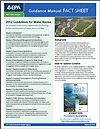Pacific Southwest, Region 9
Serving: Arizona, California, Hawaii, Nevada, Pacific Islands, Tribal Nations
Water Recycling and Reuse: The Environmental Benefits
Additional Resources
Guidelines
for Water Reuse: 2012 Edition (PDF) (643 pp, 18MB)
Newly updated, authoritative reference for facilitating
further development of water reuse practices.
New Guidance Document on economic analysis for water recycling projects is available
Gray Water National Standard Will Help Bring New Products to Market
PBS News Hour Special: Water Recycling, March 24, 2008 ![]()
 National Database of Water Reuse Facilities
National Database of Water Reuse Facilities ![]()
The national database contains an inventory of water reuse facilities in the U.S. and other relevant information.
Water Reuse Report and Survey Results
National Water Research Institute Releases White Paper on Benefits of Direct Potable Reuse
More Info »
Water Reuse: Potential for Expanding the Nation's Water Supply through Reuse of Municipal Wastewater (Released by the National Research Council)
More Info »
 WateReuse Report on "Direct Potable Reuse: A Path Forward" (Free Download)
WateReuse Report on "Direct Potable Reuse: A Path Forward" (Free Download) ![]()
More Info »
Results of 2009 California Municipal Wastewater Recycling Survey ![]()
More Info »
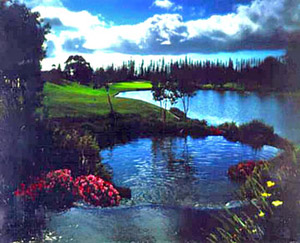
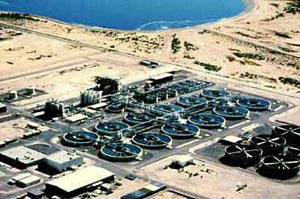
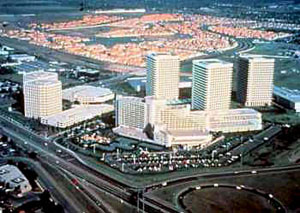
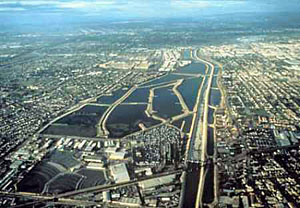
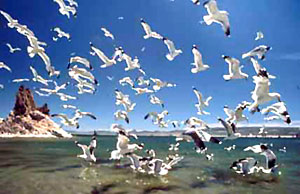
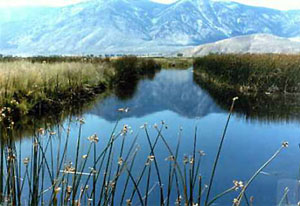
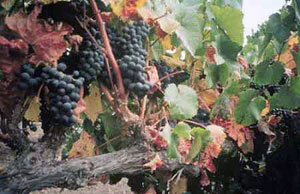
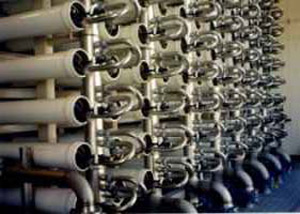
On this page:
- What is Recycling?
- How Can Recycled Water Benefit Us?
- What are the Environmental Benefits of Water Recycling?
- Water Recycling Can Decrease Diversion of Freshwater from Sensitive Ecosystems
- Water Recycling Decreases Discharge to Sensitive Water Bodies
- Recycled Water May Be Used to Create or Enhance Wetlands and Riparian (Stream) Habitats
- Water Recycling Can Reduce and Prevent Pollution
- Recycling Water Can Save Energy
- What Is The Future Of Water Recycling?
- Research
- Regulations
- Suggested Water Recycling Treatment and Uses
- More Information
- EPA Materials
What Is Water Recycling?
Recycle: verb
- a. To recover useful materials from garbage or waste
b. To extract and reuse.
While recycling is a term generally applied to aluminum cans, glass bottles, and newspapers, water can be recycled as well. Water recycling is reusing treated wastewater for beneficial purposes such as agricultural and landscape irrigation, industrial processes, toilet flushing, and replenishing a ground water basin (referred to as ground water recharge). Water recycling offers resource and financial savings. Wastewater treatment can be tailored to meet the water quality requirements of a planned reuse. Recycled water for landscape irrigation requires less treatment than recycled water for drinking water. No documented cases of human health problems due to contact with recycled water that has been treated to standards, criteria, and regulations have been reported.
Water is sometimes recycled and reused onsite. For example, when an industrial facility recycles water used for cooling processes. A common type of recycled water is water that has been reclaimed from municipal wastewater, or sewage. The term water recycling is generally used synonymously with water reclamation and water reuse.
Another type of recycled water is "gray water".Gray water, or gray water, is reusable wastewater from residential, commercial and industrial bathroom sinks, bath tub shower drains, and clothes washing equipment drains. Gray water is reused onsite, typically for landscape irrigation. Use of non toxic and low-sodium (no added sodium or substances that are naturally high in sodium) soap and personal care products is required to protect vegetation when reusing gray water for irrigation. National Science Foundation (NSF) International has established a wastewater treatment task group on onsite residential and commercial gray water treatment systems. They have developed a draft new standard – NSF 350 – Onsite Residential and Commercial Reuse Treatment Systems. This standard encompasses residential wastewater treatment systems (similar to the scope of VSF/ANSI Standards 40 and 245) along with systems that treat only the gray water portion. For more information visit the NSF website ![]() . EPA and CDC brought together agency and academic experts to explore the science available for addressing high-priority regional needs in the areas of:
. EPA and CDC brought together agency and academic experts to explore the science available for addressing high-priority regional needs in the areas of:
- Gray water exposure risk to humans and ecosystems;
- risk management options for gray water;
- water scarcity,
- and trends in water use.
For more information visit EPA's Regional Science Workshop website.
Through the natural water cycle, the earth has recycled and reused water for millions of years. Water recycling, though, generally refers to projects that use technology to speed up these natural processes. Water recycling is often characterized as "unplanned" or "planned." A common example of unplanned water recycling occurs when cities draw their water supplies from rivers, such as the Colorado River and the Mississippi River, that receive wastewater discharges upstream from those cities. Water from these rivers has been reused, treated, and piped into the water supply a number of times before the last downstream user withdraws the water. Planned projects are those that are developed with the goal of beneficially reusing a recycled water supply.
How Can Recycled Water Benefit Us?
Recycled water can satisfy most water demands, as long as it is adequately treated to ensure water quality appropriate for the use. The Treatment and Uses chart shows types of treatment processes and suggested uses at each level of treatment. In uses where there is a greater chance of human exposure to the water, more treatment is required. As for any water source that is not properly treated, health problems could arise from drinking or being exposed to recycled water if it contains disease-causing organisms or other contaminants.
Recycled water can satisfy most water demands, as long as it is adequately treated to ensure water quality appropriate for the use.
EPA regulates many aspects of wastewater treatment and drinking water quality, and the majority of states in the US have established criteria or guidelines for the beneficial use of recycled water. In addition EPA developed a technical document entitled Guidelines for Water Reuse (PDF) (28pp, 614K) About PDF) which contains a summary of state requirements, and guidelines for the treatment and uses of recycled water. State and Federal regulatory oversight has successfully provided a framework to ensure the safety of the many water recycling projects that have been developed in the United States.
Uses for Recycled Water
- agriculture
- landscape
- public parks
- golf course irrigation
- cooling water for power plants and oil refineries
- processing water for mills, plants
- toilet flushing
- dust control,
- construction activities
- concrete mixing
- artificial lakes
Recycled water is most commonly used for nonpotable (not for drinking) purposes, such as agriculture, landscape, public parks, and golf course irrigation. Other nonpotable applications include cooling water for power plants and oil refineries, industrial process water for such facilities as paper mills and carpet dyers, toilet flushing, dust control, construction activities, concrete mixing, and artificial lakes.
Although most water recycling projects have been developed to meet nonpotable water demands, a number of projects use recycled water indirectly for potable purposes. These projects include recharging ground water aquifers and augmenting surface water reservoirs with recycled water. In ground water recharge projects, recycled water can be spread or injected into ground water aquifers to augment ground water supplies, and to prevent salt water intrusion in coastal areas. For example, since 1976, the Water Factory 21 Direct Injection Project, located in Orange County, California, has been injecting highly treated recycled water into the aquifer to prevent salt water intrusion, while augmenting the potable ground water supply.
While numerous successful ground water recharge projects have been operated for many years, planned augmentation of surface water reservoirs has been less common. However, there are some existing projects and others in the planning stages. For example, since 1978, the upper Occoquan Sewage Authority has been discharging recycled water into a stream above Occoquan Reservoir, a potable water supply source for Fairfax County, Virginia. In San Diego, California, the Indirect Potable Reuse Reservoir Augmentation Project is currently being studied. If deemed technically feasible and approved by the City Council and Mayor, this project would augment the San Vicente Reservoir with 12,000 acre-feet per year of recycled water treated at a new Advanced Water Treatment Plant.
The use of gray water at decentralized sites (see definition) for landscape irrigation and toilet flushing reduces the amount of potable water distributed to these sites, the amount of fertilizer needed, and the amount of wastewater generated, transported, and treated at wastewater treatment facilities. In other words, water reuse saves water, energy, and money. Decentralized water reuse systems are being used more in the arid west where long term drought conditions exist. Successful gray water systems have been operating for many years,. They can meet up to 50% of a property's water needs by supplying water for landscaping. Recycling gray water saves fresh potable water for other uses, reduces the volume of wastewater going to septic systems and wastewater treatment plants, and increases infrastructure capacity for new users.
What are the Environmental Benefits of Water Recycling?
In addition to providing a dependable, locally-controlled water supply, water recycling provides tremendous environmental benefits. By providing an additional source of water, water recycling can help us find ways to decrease the diversion of water from sensitive ecosystems. Other benefits include decreasing wastewater discharges and reducing and preventing pollution. Recycled water can also be used to create or enhance wetlands and riparian habitats.
Water Recycling Can Decrease Diversion of Freshwater from Sensitive Ecosystems
Plants, wildlife, and fish depend on sufficient water flows to their habitats to live and reproduce. The lack of adequate flow, as a result of diversion for agricultural, urban, and industrial purposes, can cause deterioration of water quality and ecosystem health. People who reuse water can supplement their demands by using a reliable source of recycled water, which can free considerable amounts of water for the environment and increase flows to vital ecosystems.
Water Recycling Decreases Discharge to Sensitive Water Bodies
In some cases, the impetus for water recycling comes not from a water supply need, but from a need to eliminate or decrease wastewater discharge to the ocean, an estuary, or a stream. For example, high volumes of treated wastewater discharged from the San Jose/Santa Clara Water Pollution Control Plant into the south San Francisco Bay threatened the area's natural salt water marsh. In response, a $140 million recycling project was completed in 1997. The South Bay Water Recycling Program has the capacity to provide 21 million gallons per day of recycled water for use in irrigation and industry. By avoiding the conversion of salt water marsh to brackish marsh, the habitat for two endangered species can be protected.
Recycled Water May Be Used to Create or Enhance Wetlands and Riparian (Stream) Habitats.
Wetlands provide many benefits, which include wildlife and wildfowl habitat, water quality improvement, flood diminishment, and fisheries breeding grounds. For streams that have been impaired or dried from water diversion, water flow can be augmented with recycled water to sustain and improve the aquatic and wildlife habitat.
Water Recycling Can Reduce and Prevent Pollution
When pollutant discharges to oceans, rivers, and other water bodies are curtailed, the pollutant loadings to these bodies are decreased. Moreover, in some cases, substances that can be pollutants when discharged to a body of water can be beneficially reused for irrigation. For example, recycled water may contain higher levels of nutrients, such as nitrogen, than potable water. Application of recycled water for agricultural and landscape irrigation can provide an additional source of nutrients and lessen the need to apply synthetic fertilizers.
Recycling Water Can Save Energy
As the demand for water grows, more water is extracted, treated, and transported sometimes over great distances which can require a lot of energy. If the local source of water is ground water, the level of ground water becomes lower as more water is removed and this increases the energy required to pump the water to the surface. Recycling water on site or nearby reduces the energy needed to move water longer distances or pump water from deep within an aquifer. Tailoring water quality to a specific water use also reduces the energy needed to treat water. The water quality required to flush a toilet is less stringent than the water quality needed for drinking water and requires less energy to achieve. Using recycled water that is of lower quality for uses that don’t require high quality water saves energy and money by reducing treatment requirements.
Reusing water to save energy is more thoroughly discussed in the California Energy Commission’s 2005 report: California's Water - Energy Relationship (CEC#700-2005-011-SF). This report highlights the large amount of energy required to treat and distribute water. Energy is required first in collecting, extracting, conveying, and distributing water to end users and second in treating and disposing of the wastewater once the end users have finished with it. Although it requires additional energy to treat wastewater for recycling, the amount of energy required to treat and/or transport other sources of water is generally much greater.
What Is The Future Of Water Recycling?
Water recycling has proven to be effective and successful in creating a new and reliable water supply without compromising public health. Nonpotable reuse is a widely accepted practice that will continue to grow. However, in many parts of the United States, the uses of recycled water are expanding in order to accommodate the needs of the environment and growing water supply demands. Advances in wastewater treatment technology and health studies of indirect potable reuse have led many to predict that planned indirect potable reuse will soon become more common. Recycling waste and gray water requires far less energy than treating salt water using a desalination system.
While water recycling is a sustainable approach and can be cost-effective in the long term, the treatment of wastewater for reuse and the installation of distribution systems at centralized facilities can be initially expensive compared to such water supply alternatives as imported water, ground water, or the use of gray water onsite from homes. Institutional barriers, as well as varying agency priorities and public misperception, can make it difficult to implement water recycling projects. Finally, early in the planning process, agencies must reach out to the public to address any concerns and to keep the public informed and involved in the planning process.
As water energy demands and environmental needs grow, water recycling will play a greater role in our overall water supply. By working together to overcome obstacles, water recycling, along with water conservation and efficiency, can help us to sustainably manage our vital water resources.
Communities and businesses are working together to meet water resource needs locally in ways that expand resources, support the environment, and strengthen the economy. For example, the City of Tucson, AZ adopted an ordinance in 2008 requiring that:
- All new single family and duplex residential dwelling units shall include either a separate multiple pipe outlet or a diverter valve, and outside ‘stub-out’ installation on clothes washing machine hook-ups, to allow separate discharge of gray water for direct irrigation.
- All new single family residential dwelling units shall include a building drain or drains for lavatories, showers, and bathtubs, segregated from drains for all other plumbing fixtures, and connected a minimum three (3) feet from the limits of the foundation, to allow for future installation of a distributed gray water system
- All gray water systems shall be designed and operated according to the provisions of the applicable permit authorized by ADEQ under the Arizona Administrative Code, Title 18, Chapter 9.
Research
The Water Environment Research Foundation (WERF) and the Soap and Detergent Association (SDA) have been working on a research program into long-term gray water reuse and its effect on human health and the environment. A report of the first phase, primarily a literature search, has been published (Roesner et al., 2006), and a new publication is expected in 2011.
Regulations
Most states have regulations governing water quality for water recycling of reclaimed water from centralized treatment facilities, but only about 30 of the 50 states have regulations pertaining to water recycling of gray water. The WateReuse Association has a detailed summary of state-by-state gray water regulations. A compendium of state regulations governing the reuse of reclaimed water is contained in Appendix A in the USEPA 2004 Guidelines for Water Reuse document (click on icon picture of front cover of this document at the beginning of this webpage to access the document online).
Suggested Water Recycling Treatment and Uses |
|||
Increasing Levels of Treatment; |
|||
Primary |
Secondary
Treatment: |
Tertiary / Advanced
Treatment: |
|
|
|
|
|
* Suggested uses are based on Guidelines for Water Reuse, developed by U.S. EPA. |
|||
Gray Water Reuse from Decentralized Onsite Systems |
|
| Treatment Levels Vary | |
| Primary Treatment*: |
|
• Landscape irrigation** |
|
* Requires use of nontoxic and low sodium (no added sodium or substances with naturally occurring high levels of sodium) soap & personal care products. ** Discharged gray water as generated (not stored) used below surface, application away from populated areas and drinking water wells. |
|
More Information About Water Recycling and Reuse
Cheryl McGovern (mcgovern.cheryl@epa.gov)
Environmental Protection Specialist
U.S. Environmental Protection Agency
75 Hawthorne Street (WTR-4)
San Francisco, California 94105
(415) 972-3415
Robert Bastian (bastian.robert@epa.gov)
Office of Wastewater Management (4204)
EPA East Building
1200 Pennsylvania Ave., NW
Washington, D.C. 20460
(202) 564-0653
EPA Materials
Guidelines for Water Reuse
US EPA Office of Technology Transfer and Regulatory Support.
EPA/625/R-92/004
September 1992
Municipal Wastewater Reuse: Selected Readings on Water Reuse
Office of Water (WH-595)
EPA 430/09-91-002
September, 1991
Other Related Resources
Layperson's Guide to Water Recycling and Reuse, published in 1992 by the Water Education Foundation, Sacramento, California.
Video, entitled Water from Water: Recycling, produced in 1995 by National Water Research Institute, Fountain Valley, California.
Video, entitled Water in an Endless Loop, produced in 1997 by WateReuse Foundation, Sacramento, California
Research On Recycled Water is done by EPA through the Office of Research and Development.
The Water Reuse Research Foundation ![]() operates to conduct and promote applied research in water reuse and desalination.
operates to conduct and promote applied research in water reuse and desalination.
The National Water Research Institute ![]() sponsors projects and programs focused on ensuing safe, reliable sources of water. EPA sponsors research from time to time.
sponsors projects and programs focused on ensuing safe, reliable sources of water. EPA sponsors research from time to time.
Download PDF version: Water Recycling and Reuse: The Environmental Benefits (PDF) (11 pp, 3.1MB, About PDF)
Note: For easier viewing, download the entire file and then view the saved file. To do this, right-click on the link directly above and choose "save link as..." With your browser, open the file that you just saved.

